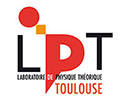Computational modelling of cell motility modes emerging from cell-matrix adhesion dynamics
Résumé
Lymphocytes have been described to perform different motility patterns such as Brownian random walks, persistent random walks, and Le ´vy walks. Depending on the conditions, such as confinement or the distribution of target cells, either Brownian or Le ´vy walks lead to more efficient interaction with the targets. The diversity of these motility patterns may be explained by an adaptive response to the surrounding extracellular matrix (ECM). Indeed, depending on the ECM composition, lymphocytes either display a floating motility without attaching to the ECM, or sliding and stepping motility with respectively continuous or discontinuous attachment to the ECM, or pivoting behaviour with sustained attachment to the ECM. Moreover, on the long term, lymphocytes either perform a persistent random walk or a Brownian-like movement depending on the ECM composition. How the ECM affects cell motility is still incompletely understood. Here, we integrate essential mechanistic details of the lymphocyte-matrix adhesions and lymphocyte intrinsic cytoskeletal induced cell propulsion into a Cellular Potts model (CPM). We show that the combination of de novo cell-matrix adhesion formation, adhesion growth and shrinkage, adhesion rupture, and feedback of adhesions onto cell propulsion recapitulates multiple lymphocyte behaviours, for different lymphocyte subsets and various substrates. With an increasing attachment area and increased adhesion strength, the cells' speed and persistence decreases. Additionally, the model predicts random walks with short-term persistent but long-term subdiffusive properties resulting in a pivoting type of motility. For small adhesion areas, the spatial distribution of adhesions emerges as a key factor influencing cell motility. Small adhesions at the front allow for more persistent motility than larger clusters at the back, despite a similar total adhesion area. In conclusion, we present an integrated framework to simulate the effects of ECM
Origine : Fichiers éditeurs autorisés sur une archive ouverte
